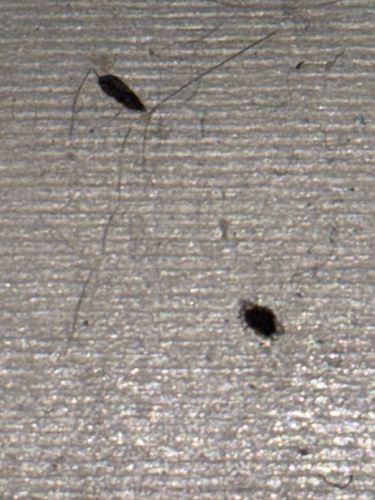Booklouse / Psocid
Scientific Name: Various species in the order Psocoptera, common genera include Liposcelis.
Order & Family: Order: Psocoptera; Family: Liposcelididae (or other families within Psocoptera)
Size: Typically 1-2 mm in length. Some species can be smaller or slightly larger.

Natural Habitat
Indoor environments with high humidity (ideally above 60%), such as bathrooms, kitchens, basements, neglected archives, old books, and stored food products. They prefer dark, undisturbed places.
Diet & Feeding
Mainly feed on microscopic molds, fungi, starches, glues, and other organic matter found in humid environments. They are common in old books, wallpaper, and food products.
Behavior Patterns
Booklice are soft-bodied insects that move quickly when disturbed. They are typically found in damp, dark, and undisturbed areas. They are known for feeding on mold and fungi, which thrive in moist conditions. They can reproduce rapidly under favorable conditions of high humidity and warmth.
Risks & Benefits
Risks: Generally harmless to humans, they do not bite or transmit diseases. However, large infestations can be a nuisance and contaminate food products, particularly cereals, grains, and dried foods. They can also damage books, documents, and natural fibers by feeding on mold or glues. Benefits: They play a minor role in breaking down organic matter in their natural outdoor habitats, but are mostly considered pests indoors.
Identified on: 9/1/2025